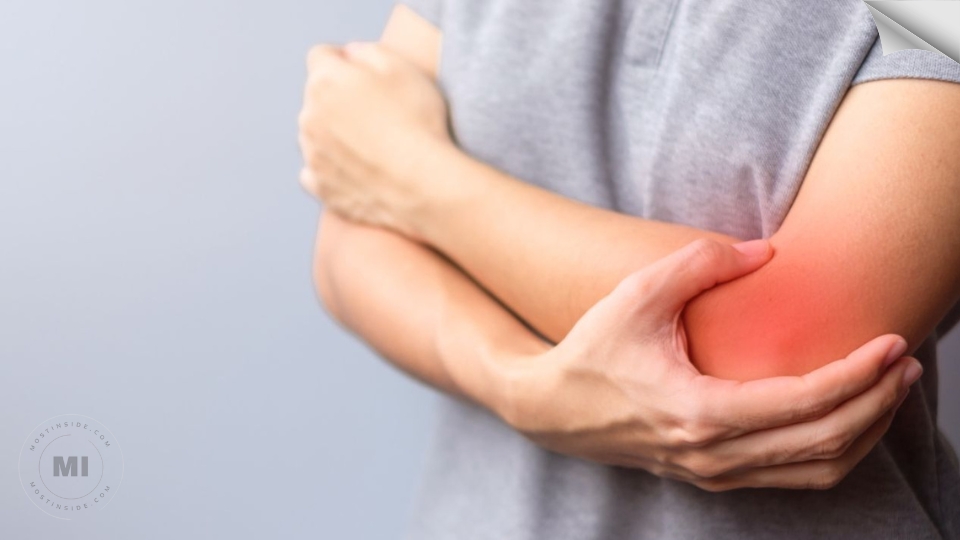Orthopedic Specialist Dr. Brian Cable on Treating Lateral Elbow Tendinopathy: From Conservative to Surgical

Lateral elbow tendinopathy, commonly known as tennis elbow, is a painful and debilitating condition that affects millions of people worldwide. It is caused by repetitive stress on the elbow tendons and can cause pain and weakness in the arm. While conservative treatment options can be effective for some patients, others may require surgery to fully recover. In this article, orthopedic specialist Dr. Brian Cable shares his insights on treating lateral elbow tendinopathy and discusses the range of treatment options available to patients.
Contents
ToggleConservative Treatment Options
Dr. Cable emphasizes the importance of starting with non-surgical treatments such as rest, physical therapy, and nonsteroidal anti-inflammatory drugs (NSAIDs) to reduce pain and inflammation. “For mild to moderate cases of lateral elbow tendinopathy, we typically start with conservative measures,” he says. “Physical therapy can be particularly effective in helping patients regain strength and flexibility in the affected arm.”
Dr. Cable also stresses the importance of patient education and self-care techniques in the management of lateral elbow tendinopathy. “It’s important for patients to understand the cause of their condition and how to avoid activities that may exacerbate their symptoms,” he says. “Simple self-care measures such as icing the affected area and using ergonomic tools and techniques can also be helpful in reducing pain and promoting healing.”
When Conservative Measures Don’t Work
For some patients, conservative treatment measures may not be sufficient to relieve their symptoms. In these cases, Dr. Cable may recommend more aggressive treatment options such as corticosteroid injections or shockwave therapy. “Corticosteroid injections can be effective in reducing inflammation and pain in the affected area, but they are not a long-term solution and should be used sparingly,” he says. “Shockwave therapy uses high-energy sound waves to stimulate the body’s natural healing processes and has shown promise in the treatment of lateral elbow tendinopathy.”
Surgical Options
If conservative and non-invasive treatment options do not provide relief, surgery may be the best option for patients. “Surgery is typically reserved for patients who have not responded to non-surgical treatments and have persistent pain and disability,” says Dr. Cable. “There are a few different surgical techniques that can be used to treat lateral elbow tendinopathy, but the most common procedure is called a lateral epicondyle release.”
During a lateral epicondyle release procedure, the surgeon makes a small incision near the elbow and cuts the tendon to release the tension in the affected area. The procedure is usually performed on an outpatient basis and patients can usually return to normal activities within a few weeks.
Dr. Cable stresses the importance of a thorough evaluation by a qualified orthopedic specialist before deciding on surgical treatment. “Surgery should always be a last resort after all other treatment options have been exhausted,” he says. “A skilled orthopedic surgeon can evaluate the patient’s condition and determine the best course of action based on their individual needs and goals.”
Expert Insights
Dr. Cable believes that patient education is essential in the management of lateral elbow tendinopathy. “Patients need to understand their condition and what they can do to alleviate their symptoms and prevent further injury,” he says. “By working closely with their orthopedic specialist and following a comprehensive treatment plan, patients can regain strength and function in their affected arm and return to their daily activities with confidence.”
Dr. Brian Cable also emphasizes the importance of seeking treatment early for lateral elbow tendinopathy. “The longer you wait to seek treatment, the harder it can be to treat the condition,” he says. “If you are experiencing persistent pain or weakness in your elbow, it’s important to see an orthopedic specialist as soon as possible to get an accurate diagnosis and begin treatment.”
Lateral elbow tendinopathy can be a challenging and painful condition, but with the right treatment approach, patients can experience significant relief from their symptoms. Conservative measures such as rest, physical therapy, and medications can be effective for some patients, while more aggressive treatments such as corticosteroid injections and shockwave therapy may be necessary for others. For those who do not respond to non-surgical treatments, surgery may be necessary to fully recover. However, it is important to seek treatment early and work closely with a qualified orthopedic specialist to develop a comprehensive treatment plan tailored to your individual needs and goals.
As Dr. Cable puts it, “The most important thing is to understand that there are many treatment options available for lateral elbow tendinopathy, and a skilled orthopedic specialist can work with you to find the best solution for your unique situation.” So if you are experiencing elbow pain or weakness, don’t hesitate to seek the help you need to get back to doing the things you love.
About Dr. Brian Cable
Dr. Brian Cable, MD grew up in Los Angeles, California. He has been a Sports Medicine Fellow at the University of Pennsylvania School of Medicine since 2018. Dr. Cable’s specialty is orthopedic surgery, and he knows the field is both challenging and rewarding. He graduated from the University of California, Los Angeles Magna Cum Lade.
Most Inside
Most Inside offers high-quality recommendations and valuable updates to enhance all aspects of your life, providing premium guidance and enriching experiences.




